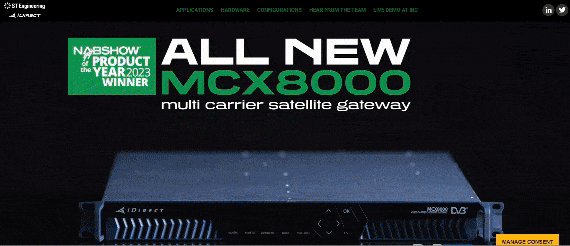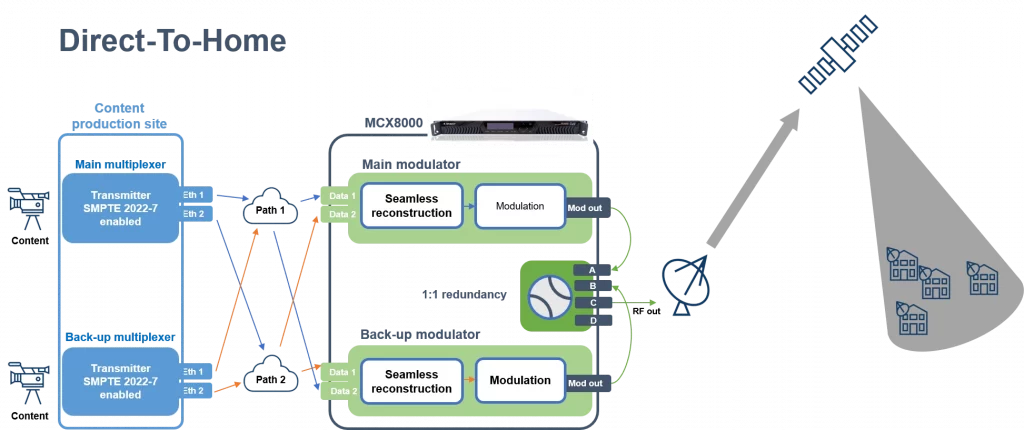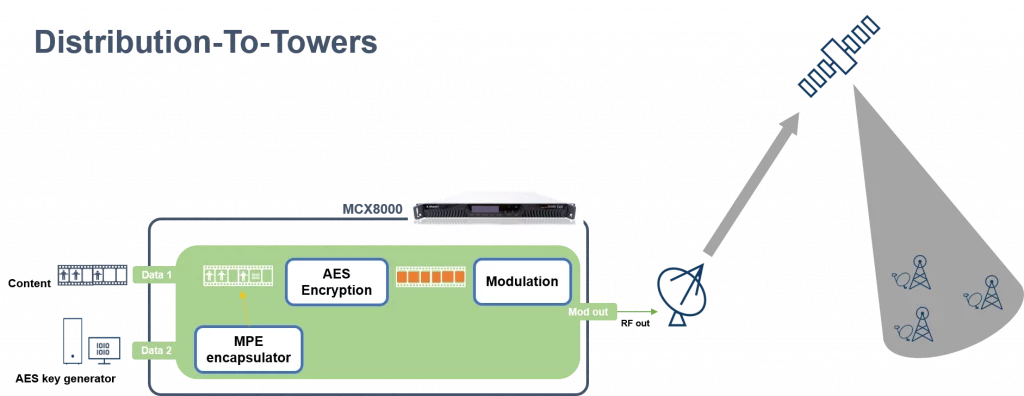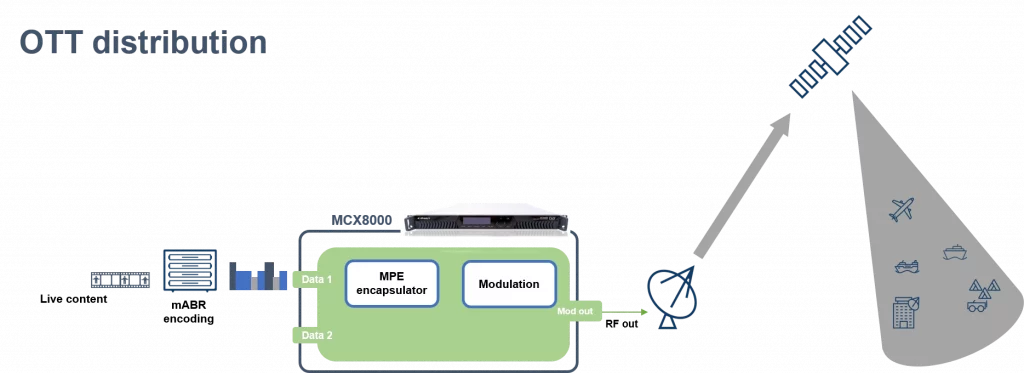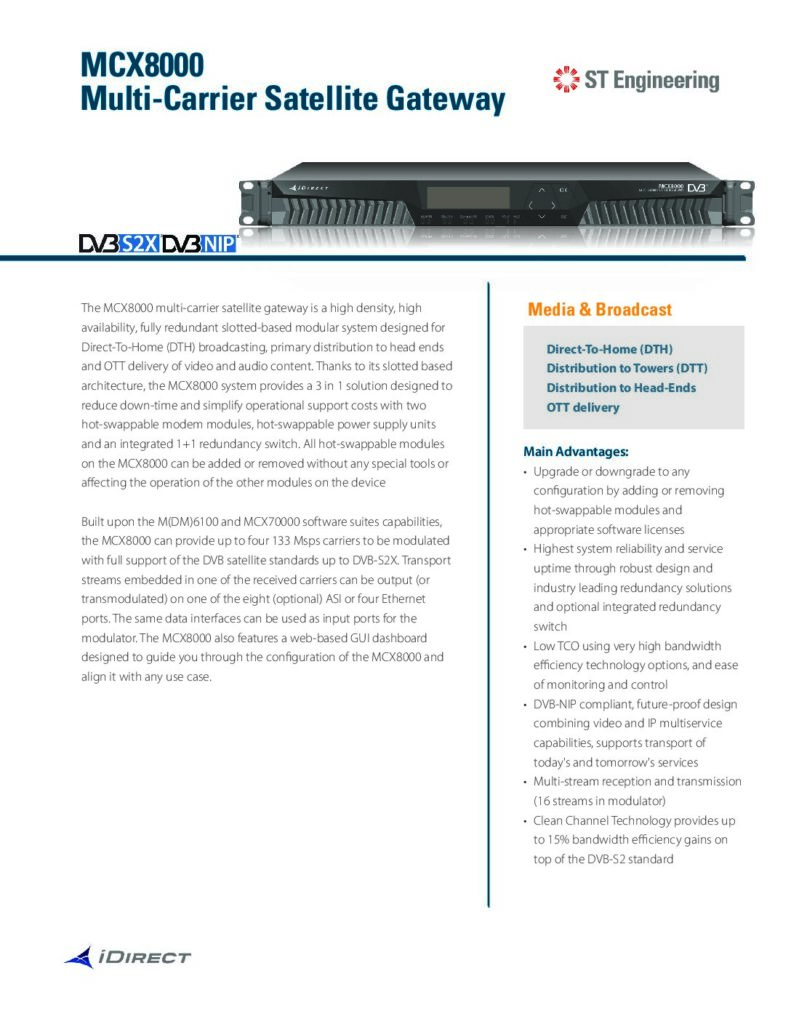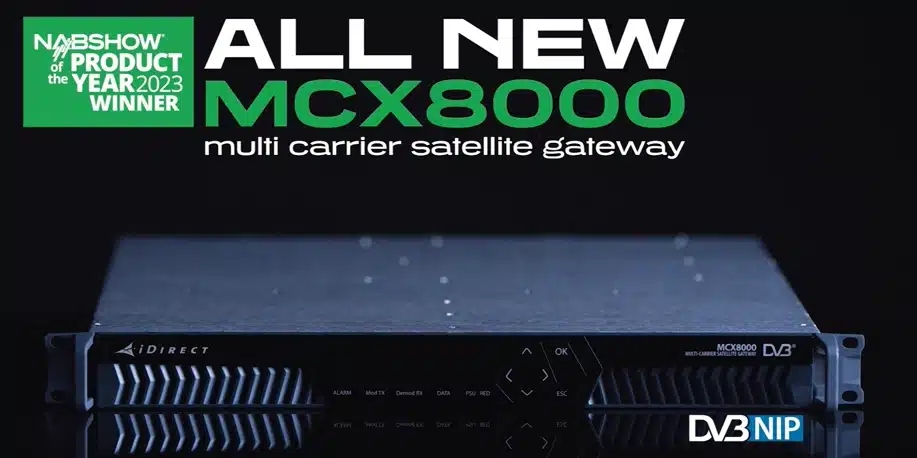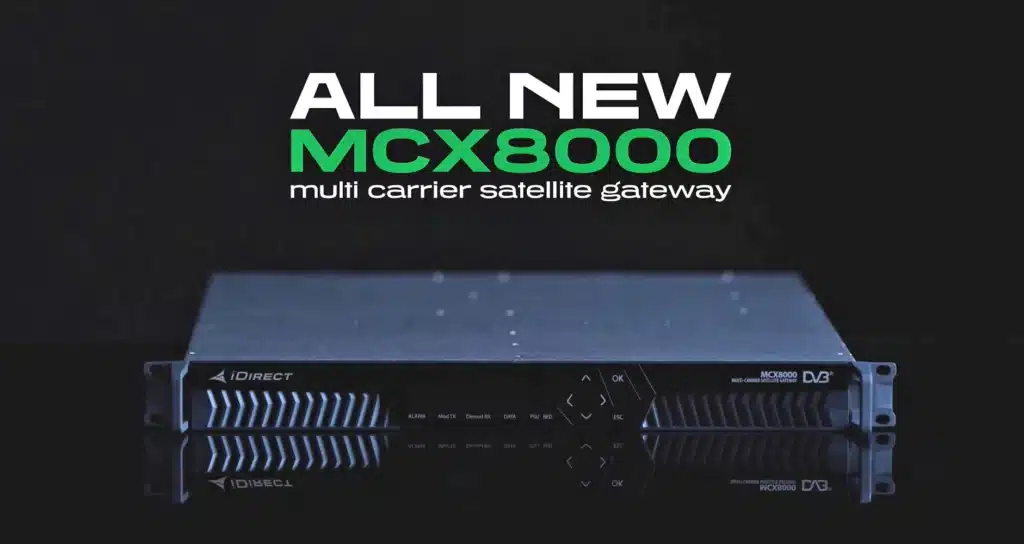The MCX8000 multi-carrier satellite gateway is a high density, high availability, fully redundant slotted-based modular system designed for Direct-To-Home (DTH) broadcasting, primary distribution to head ends and OTT delivery of video and audio content.
MCX8000 Multi-Carrier Satellite Gateway
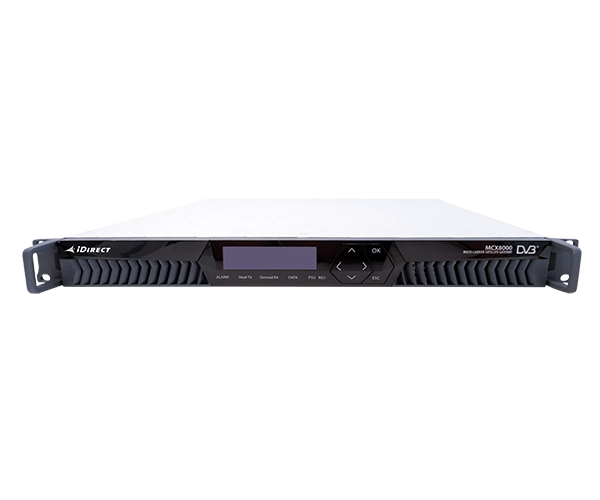
-
Features of the MCX8000
- Highest system reliability and service uptime through robust design and industry leading redundancy solutions
- 3 in 1 solution
- Hot-swappable modem boards and power supply units.
- Toolless assembly and maintenance
- Integrated 1+1 redundancy switch
- Up to four 133 Msps carriers to be modulated with full support of the DVB-S, DVB-S2, DVB-S2X and DVB NIP satellite standards
- Clean Channel Technology provides up to 15% bandwidth efficiency gains on top of the DVB-S2 standard
- Future-proof design combining video and IP multiservice capabilities, supports transport of today´s and tomorrow´s services
- Pay-as-you-grow flexible licensing scheme
- Minimum symbol rate: 256 kbaud
- Maximum symbol rate: 133 Mbaud
- Data rates up to 425 Mbsps
- 300+ Mbps IP encapsulation for OTT video distribution
-
Stay up to date on the latest product news, use cases, architecture and features of the MCX8000 Multi-Carrier Satellite Gateway. The MCX8000 can be found at tradeshows around the world.
-
Direct-To-Home
Direct-to-Home or DTH enables a broadcasting company to directly deliver the satellite signal to consumer households. The consumer has an individual reception system existing of an antenna/dish and satellite Integrated Receiver-Decoder (IRD)/receiver). Bringing quality content to the largest possible subscriber base is one of the key factors of DTH. However, the bandwidth pipe over satellite is limited and could impose a hard limit on quality, subscriber coverage and growth.
The MCX8000 Multi-Carrier Satellite Gateway has the right features for squeezing the maximum throughput out of the available bandwidth, whether using the DVB-S, DVB-S2, or DVB-S2X standard. It supports SMPTE 2022-7 Seamless Protection Switching providing reliable transport stream delivery.
Thanks to its slotted based architecture, the MCX8000 system provides a 3 in 1 solution designed to reduced down-time and simplify operational support costs with two hot-swappable modem modules that can be added or removed without any special tools or affecting the operation of the other slot, hot-swappable power supply units and an integrated 1+1 redundancy switch.
Distribution-To-Towers
Distribution to Towers or DTT utilizes conventional antennas (or aerials) instead of satellite dishes or cable connections to deliver video and audio services to customers. While the transmission of radio frequencies through airwaves is like analogue television, the biggest difference is that the multiplex transmitters enable the reception of multiple channels on a single frequency range. The MCX8000 Multi-Carrier Satellite Gateway ideally fits as a satellite front-end feeding multiple IRDs (Integrated Receiver Decoders).
The MCX8000 receives multiple MPEG-2 transport streams from a single or multiple saturated transponder(s) using DVB-S2X. It then extracts those transport streams and feeds them over ASI or IP into the existing installed base of IRDs. One MCX8000 can be used for tens of TV channels. In case older IRDs have no ASI nor IP input, the MCX8000 can even transmodulate the DVB-S2X multistream carrier into a traditional DVB-S/DVB-S2 single stream carrier.
AES or Asynchronous Encryption Standard allows to encrypt the content delivered to the towers. In the ST Engineering iDirect’s modulators and demodulators, two different AES keys can be defined (odd and even key). New keys are pushed to the demodulator via in-band uni-directional remote control. Change keys on the fly? The IP data from the AES key generator is MPE encapsulated with the build in MPE encapsulator. The MPE encapsulated data is injected in the transport stream by replacing some null packets present in the transport stream.
Over-The-Top Distribution
Over-the-top or OTT refers to the productized practice of streaming content to customers directly over the web. It represents the future of entertainment. It is essential that service providers offer content that is ready to be viewed on consumer devices. However, at the same time, it is imperative to keep costs under control.
Growing traffic is a fundamental challenge when broadcasting popular content – especially live – to a wide audience. Bandwidth needs to be used efficiently and traffic needs to be minimized.
A Content Distribution Network (CDN) significantly reduces traffic on the distribution backbone by storing multiple copies of the same content as close as possible to the consumer. At the same time, start latency is minimized as well as buffering of the content.
Converting as much unicast transmission as possible to multicast transmission avoids sending multiple copies of the same content across the network, thus saving a huge amount of bandwidth. The received content will typically be converted to unicast for delivery over Wi-Fi towards mobile devices.
Whether the receiving device is a professional receiver, for reception at cellular towers (3G/4G/5G) or ATSC 3.0 towers, or Customer Premises Equipment (CPE) used in the home or at a business, they can both be equipped to receive multicast traffic and host a CDN.
Broadcast transmission is integral to successful content distribution. And at the heart of that is a traditionally overlooked solution: satellite.
